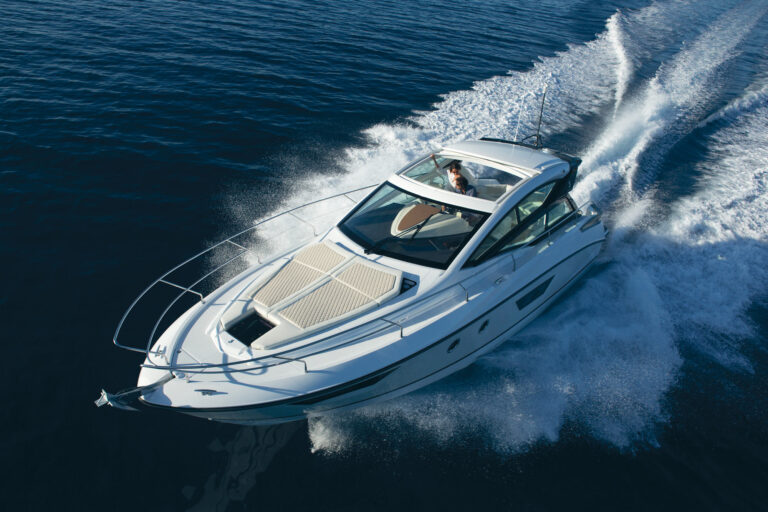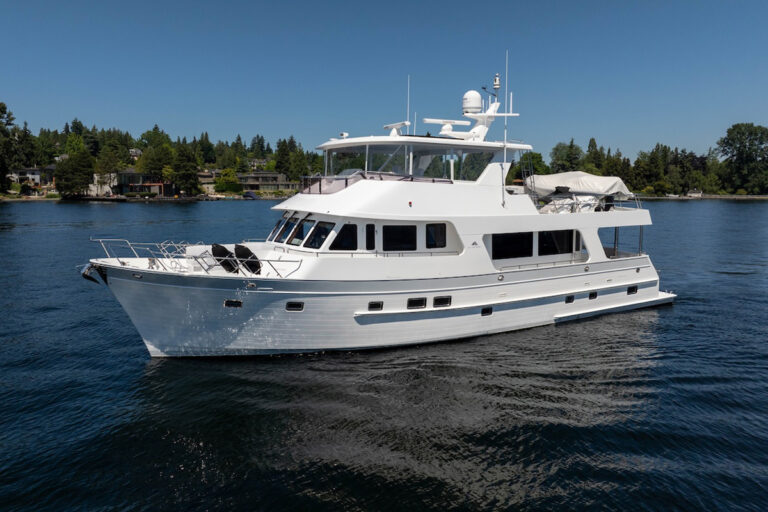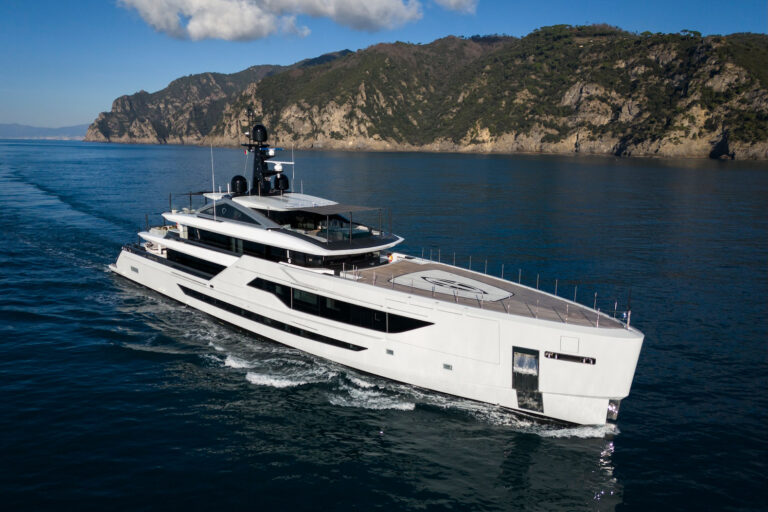I am not superstitious. I’ll start trips on Friday, I look behind me when leaving port, both of my sea bags are black, and I not only carry bananas on fishing boats, I’ve actually trolled the peels as strip baits, successfully. But still, those two round, white dials side by side in the engineroom, the black numbers indicating 13 hours exactly on each engine, made me pause. Given the weather and untested nature of the boat, a sign like that should have impelled me to double- and triple-check everything. Instead I just put it out of my mind.
Now, of course, I can still see the image of those hourmeters in my head, right next to the image of my hand lifting the VHF microphone from its bracket as I uttered, for the first time in 20 years as a professional mariner, Mayday, Mayday, Mayday.
Since that fateful December afternoon of my watery discontent, whenever the opportunity arises I ask salvage captains for their tips on quick but effective offshore repairs. Why? Because Coast Guard-required courses offer surprisingly little practical instruction on controlling flooding, which is odd considering we’re taught our vessel is our best lifeboat. With today’s continuing education requirements, it’s true that professional captains have hands-on training covering most emergencies. We’ve fought fires; launched, righted and boarded life rafts; and practiced for various medical contingencies. It’s also true that most yachts carry tapered wooden plugs, but these aren’t really reassuring: Unless a neglected through-hull breaks, what are the odds of a perfectly round hole?
So I’ve gone to the experts, those salvage skippers. Each has different opinions, but all offer pragmatic ways to control flooding using materials found aboard. They’ve also recommended a few additional items to carry, just in case.
First, recycle the wreckage. ‘You won’t find a better hole repair than the piece that came out of the hole,’ says Chris Shaffner of TowBoatU.S. Palm Beach. When collisions or hard groundings break fiberglass, the remnants typically protrude inside the boat. Shaffner carries two-by-fours, wooden blocks, and hydraulic bottle jacks to force the pieces back into place. A few squares of plywood and various lengths of wood aren’t hard to store, and wedged against the overhead will have the same effect. Place a cushion or piece of mattress foam under the plywood for a better seal. In a pinch wooden tender paddles, strong boat hooks, or even pieces of the boat’s interior will work. For tools, a sharp saw and a small sledgehammer might come in handy.
Towels are plentiful on boats and, rolled up tightly, fill smallish holes well. For larger holes try pillows or cushions. Using water pressure, leaks might be blocked from the outside with rubber-backed welcome mats, seat cushions, mattresses, even trash bags. I now carry a 9 x 12 vinyl tarp. Quick-set underwater epoxy-the kind like Play-Doh in a tube-is handy for ‘get-home’ repairs after the initial flooding is controlled. Wax sold for toilet seals at the home store will seal small gaps from the outside, and doesn’t need time to cure. Kevin Collins of TowBoatU.S. Fort Lauderdale stresses knowing where through-hull fittings and struts are located. To get a jump on these likely sources of flooding, he recommends having poly-ball fenders sized to fit your engine exhausts, particularly if generators, air conditioners or drains discharge through them.
Knowledge, it is said, is learned from others, but wisdom comes from experience. My own enlightening experience started as a quick delivery from a boatyard in West Palm Beach to the owner’s home in Coconut Grove. A stiff northwest wind blowing against the Gulf Stream stacked the great current’s surface upon itself until the horizon seemed like a low-lying island with rolling hills and dense, dark vegetation. But with the offshore breeze it was tenable near shore. The speedo crept past 40 as we turned south from the inlet, barely taking any spray over the bow; exactly the conditions the 40-foot offshore racing hull was designed for. Considering our midafternoon start I fully expected to be tied up 80-some miles south in the Grove in time for stone crabs at Monty’s at dinner.
Within an hour our dining prospects changed dramatically. We’d just come off a wave and caught a little air. The rev-limiter alarm chirped to remind me to focus on helmsmanship, but just before the alarm I heard, or maybe felt, something. Not the props cavitating or water against the hull at high speed, but something within the boat itself. The brief instant it took for my hand to reach the throttle was too long. The metallurgist later concluded a bearing in the sterndrive seized, and when the 470 hp V-8 could no longer turn its propeller, it dutifully tried to turn itself instead. What remained of the back half of the motor lay in the bilge, with barely recognizable bits of mounts and bell housing and oil pan sprayed about the engineroom. The dual stainless steel exhaust pipes were now letting water in with the same high-performance efficiency with which they were designed to expel spent fuel and burnt air.
None of the tips I’ve discussed so far would have helped. I could hardly fit my hand between the engine and transom and barely reached the holes with my fingertips. But if I’d had a couple of bicycle-tire inner tubes and a hand pump–items I now keep in my sea bag-I could have snaked them into what was left of the exhausts and added some air, plugging the holes. Inner tubes can also be used as patches, or cut into strips and wrapped around hoses. Other handy items include duct tape, Ace bandages, a big pipe wrench to immobilize damaged propeller shafts, ratcheting trailer tie-down straps, and large screwdrivers or other prying tools. If you carry a good cordless drill, also get some two-inch coarse-thread drywall screws.
The two main pumps were being overwhelmed, but my options were rather dire. Since this boat was almost new I hadn’t yet installed emergency pumps; otherwise there would have been an alarm and high-capacity pump in each compartment, just high enough above the regular bilge pump that they would normally stay dry. While not feasible with sterndrives, ‘Y’ valves allowing engines to draw from the bilge are very effective, although raw-water impellers will be ruined if debris clogs the intakes (the oil-absorbent diapers commonly placed under engines are common culprits) or the bilge empties and the engines suck air. Another caveat: Since there isn’t a worse time for both engines to die than when you’re taking on water, only use one engine’s emergency suction at a time.
It was fortunate that a salvage boat arrived in minutes, immediately passing a giant Rule bilge pump with a long discharge hose and extended wires. Since the boat’s batteries were well submerged, I was also given an automotive battery to drive the pumps, but this only slowed the rising waters, which now covered most of the engines. The salvor’s high-capacity, gasoline-powered pump took a few minutes to rig, but once it was running the bilge emptied quickly.
Please note that the arrival of a salvage boat doesn’t mean your work is over. It’s important to know what to do on your end. If you’re not familiar with small gas motors and cam-lock plumbing fittings, make an appointment with your local towing provider to learn. It could save your boat.
Salvors are unquestionably useful-in addition to pumps, they carry dive gear, pneumatic tools, lift bags, and whatever else it might take to keep your boat afloat-and it pays to call for their help early. But do understand that salvage is not covered under contract towing plans, and may not be covered by your boat’s insurance policy. ‘When the water is rushing in is not a good time to learn about salvage contracts,’ warns Chip Birthisel, a maritime attorney with Gray Robinson in Tampa. Considering salvage fees could be one-tenth to over one-half the value of the vessel, Birthisel suggests talking to your insurance carrier, local salvor, and an admiralty attorney ahead of time to understand your options.
There is only one reason boats sink: the improper distribution of water between inside and outside of the hull. As I learned on my fateful delivery to Coconut Grove, high-capacity bilge pumps and a prearranged damage-control plan will help keep that ratio favorable. Also remember, the most experienced person aboard will likely be at the source of the emergency. Make sure someone else can use the VHF and GPS-and if necessary launch the life raft.









